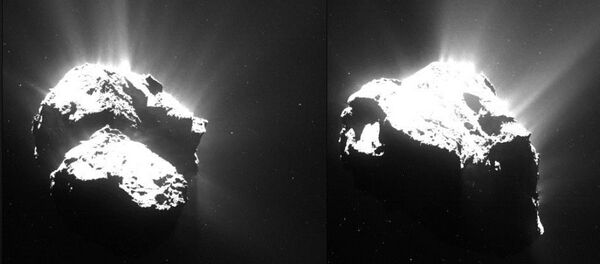Sediments at the bottom of the crater were determined by researchers to contain heightened levels of carbon, pointing to the possibility that microbes could have once flourished there. The impact of a large space body could terraform the surrounding surface of the planet in such a way that it could support the formation of organisms, according to the researchers.
Scientists have claimed that the 1.8 billion-year-old Sudbury impact could not have triggered life, though some have countered that assertion, saying that similar impacts could have provided conditions necessary for the emergence of primitive organisms at a much earlier stage of Earth’s development.
The new study, by research team from the National Centre for Scientific Research (CNRS), adds evidence to that theory. The researchers conducted an experiment proving that ribose, a sugar necessary for the formation of RNA, a material vital for life, was carried to Earth within an asteroid or comet.





